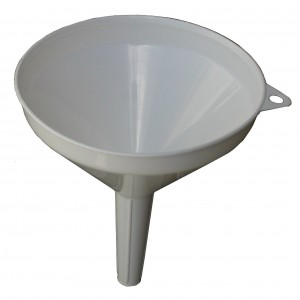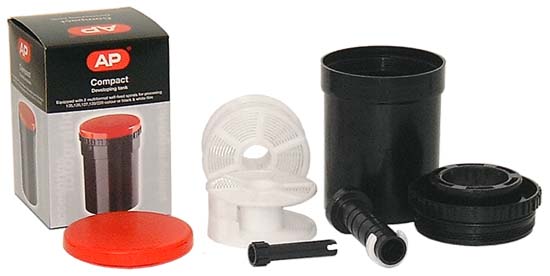The recipe for color film
Wow I guess there are way more people interested in developing themselves than I expected.
The most asked questions are “what do I need, and how to do it?”
Normally you can not answer this all in one blog post but with developing your own film it’s actually very simple (much simpler than you might guess). Because I mainly develop C41 at the moment I will share my “recipe” for this, and it’s actually pretty standard, although I have to add, some things were not in the manual from the kit I got (which led to destroying my first roll of film).
What do you need
Actually not that much.
You need the kit to develop, I use the Tetenal C41 kit which is very easy to obtain online.
![tetenal-c41-kit-1l-681-p[ekm]300x251[ekm]](https://frankdoorhof.com/web/wp-content/uploads/2013/06/tetenal-c41-kit-1l-681-pekm300x251ekm.jpg) Now this looks intimidating right…….
Now this looks intimidating right…….
Well it is not, in essence you will end up with 3 bottles.
The developer
The Blix
The Stabilizer
To store this you will need of course 3 bottles (I use 1 liter bottles) and because you use the chemicals over and over again (12-20 films) you need some funnels, I use 3 different ones for the different chemicals, because it’s not very wise to mix them 😀
 You also need a tank to put the film in, I use a kaiser tank which I find very easy to operate, and because you have to get the film in there in the complete dark I stick to this tank because I now can literally do the procedure blindfolded (took me 20 minutes to get the hang of it, so it’s really not that hard).
You also need a tank to put the film in, I use a kaiser tank which I find very easy to operate, and because you have to get the film in there in the complete dark I stick to this tank because I now can literally do the procedure blindfolded (took me 20 minutes to get the hang of it, so it’s really not that hard).
 And to get the film in the tank you will also need some tools.
And to get the film in the tank you will also need some tools.
If you own a dark room that’s perfect but realize that to get the film in the tank you have to do this in the COMPLETE dark, so no darkroom lights nothing, best is to use a so called changer which are also available online (even my local camerastore Cameranu.nl had them in stock).
 To get the film in the tank you will need :
To get the film in the tank you will need :
Scissors, a can opener and some patience.
In the dark you lift the top of the roll of film (with MF film this is much easier because you simply unwind it) with the can opener, get the film out, cut off the start of the film (the smaller part) and start winding it on the holder, put it in the tank and that’s it.
The developing
Now do realize that with B&W there are MANY different ways to do, this is why I started with color, there is only one way… well so I thought, in the end it seems that there are many small difference that can chance the outcome, at the moment I’m using this procedure which works pretty well.
I fill the sink with hot water and place the three bottles in the water.
A termometer is used to check the temperature of the developer, this is incredibly crucial, it should be 38 degrees Celcius or 100F. If you are too hot or too cold you will see colorshifts (or worse). This is the part where had the most problems with before I started but in the end it was pretty easy as long as you are patient and it probably helps we have a metal sink, the chemicals stay nice and stable on the right temperature.
Now before I start the developing I will pre-soak the tank with warm water (around 38 degrees, I will take some of the water in the sink and mix it with cold water to bring the temperature down, because the sink water is actually much hotter than 38 degrees). With the pre-soak I will rotate the tank app twice and I will try to keep the pre-soak below 2 minutes, I will start it just before I see the chemicals hit the 36 degrees threshold.
Now the developer is poured in the tank (after you remove the pre-soak water of course), I will start a timer for 3 minutes and 30 seconds, the first 10 seconds I will turn the spool in the tank, after that the lid is put on the tank and every 30 seconds I will turn the tank up side down four times.
Now the developer is taken out and is put back in the bottle and it’s time for the Blix, this is poured in and the times is set at 6 minutes and 30 seconds (starting as soon as I start to pour), also here the first 10 seconds I turn the spool and after that every 30 seconds I will turn the tank up side down four times.
After the Blix I will use warm streaming water on the tank for 3 minutes, emptying the tank three or four times in between.
Now the stabilizer is put in (be careful when pouring to fast for “foam”) and the times is set on 1 minute, I will first turn the spool and on 40 seconds turn it up side down a few times.
After the stabilizer I will fill the tank with running warm water again for 1 minute.
Now the film can be taken out and I will hang it to dry, after 4-5 hours I normally scan the film.
Addition
Thanks to a tip from someone online I’ve now also been turning the film a few times in between, according the tip it would lower the grain/noise in the photos, I can’t confirm yet because I’ve not been testing enough rolls, but I do have to say that the roll I did with this extra step did look a bit cleaner than the ones I did before. Now I have to add that most rolls I develop are over (and well over) their develop before time, so it could be a coincidence, however it doesn’t hurt the process so I thought to share it anyway.
Different methods
Although the process is 100% standardized I have to be honest that when I read the manual delivered with the kit it was not 100% clear what to do, after reading some websites (after my first attempt) and finding some guides on YouTube I started to experiment and ended up with the procedure above. It works for me but if you have another way please let me know and I can always experiment with that. From what I get now the colors are pretty accurate and the images look very nice on both the negatives as after scanning. But as mentioned when starting this series it’s been a LONG time since I developed something and everything is in essence new for me again so I just share what I know by now but I’m learning almost every day. In a future episode of “The DOORhof is always open” we will have a lot of attention for vintage photography.


Frank, post the film processing, what are you using to convert the film to digital? Also, are you doing any prints directly from film?
I keep it digitally, so V750 to scan.
haha… I never got to color film. Stopped with B&W years ago and picked it up again about two years ago. Basically, I’d say B&W is easier, and the fun is: you can tweak by using different products and all and it isn’t as temp critical as color. B&W grain and contrast depending on film and developing products/proces, that’s the whole idea for me. Color? Naaah…
Well, just my two cents.
I love to do both 😀